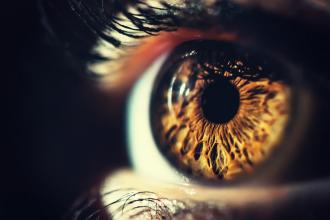Adapting to loss of an eye
More than 90% of individuals who suddenly lose the sight in one eye do not receive information from their physician regarding the functional implications of their new monocular status. Nor do they, or their family, receive community-based support or advice with regard to home and workplace modifications, alternative work programs, or career counseling. Despite this, the vast majority of newly monocular individuals usually learn to compensate for their disability and resume their previous work and daily activities.
The recovery period (adaptation) from sudden loss of one eye is typically 1 year or less. Those who experience sudden loss of vision in one eye require more time to adapt to their monocular status than those who lose their vision gradually. If peripheral vision in the affected eye is preserved, adaptation time is usually much shorter.
Monocular depth perception
Monocular individuals lose stereopsis, which is not the same as depth perception. Stereopsis is due to the parallax phenomenon when an object is viewed from slightly different angles by the right and left eye. Superimposition of the disparate images in the occipital cortex produces a three-dimensional image. Stereopsis is the only binocular clue in depth perception and is effective at only a range of 6 m (20 ft.) or less.
The many other clues that contribute to depth perception are all monocular. They include the apparent size of objects, superimposition of near objects over more distant ones, loss of contrast and color of distant objects, blurring of distant objects, linear perspective—such as convergent rail tracks—and other light and shape effects.
Stereotactic clues include the muscular effort associated with convergence and accommodation.
Multiple challenges for monocular individuals
Monocular individuals frequently have psychological problems, notably loss of self-esteem, as well as fear and anxiety—particularly with regard to the health of the remaining good eye. Psychosocial problems such as diminished skills, as well as difficulty making eye contact, grasping objects, pouring drinks, and shaking hands are challenging for the individual who has recently lost sight in one eye. Occasionally, these problems may result in the individual withdrawing from social situations.
Physical problems such as eyestrain, fatigue, glare, photosensitivity, and neck pain from frequent turning of the head may also occur.
And then there are the vocational problems that arise with the use of power tools, measuring, and cutting. Career opportunities may be lost for monocular individuals where binocular status is required.
The monocular individual may require time to adapt to the workplace situation and to gain a degree of self-confidence in this environment. During this period, the worker should avoid hazardous situations, such as working at heights or with machinery. The worker must have adequate eye protection at all times.
A first-hand perspective
The book A Singular View (5th ed., 1994 by Frank B. Brady, author and publisher), written by a newly monocular individual, provides useful insight on monocular status, as well as suggestions for ways to compensate for the condition.
—Malcolm McLean, MD
Ophthalmology Consultant
WorkSafeBC Clinical Services Department
This article is the opinion of WorkSafeBC and has not been peer reviewed by the BCMJ Editorial Board.



I lost an eye about 40 years ago, are there studies on how the loss of an eye effects the mechanics of the movement of the body. what other studies have been done on this subject matter, that may interest me.
I look forward to receiving some information